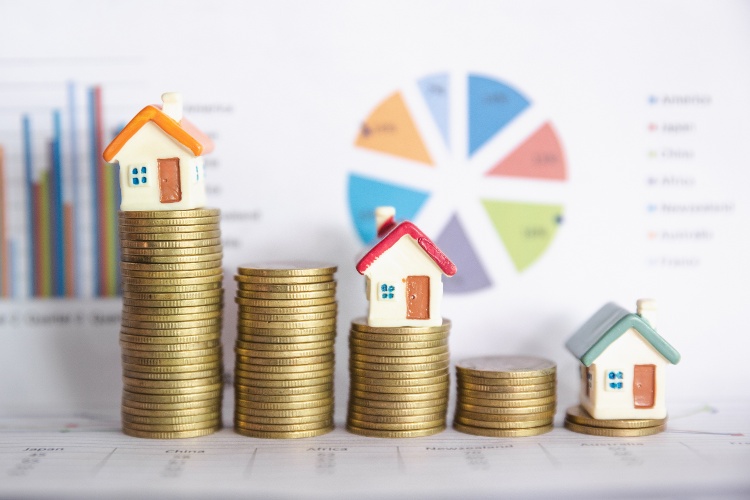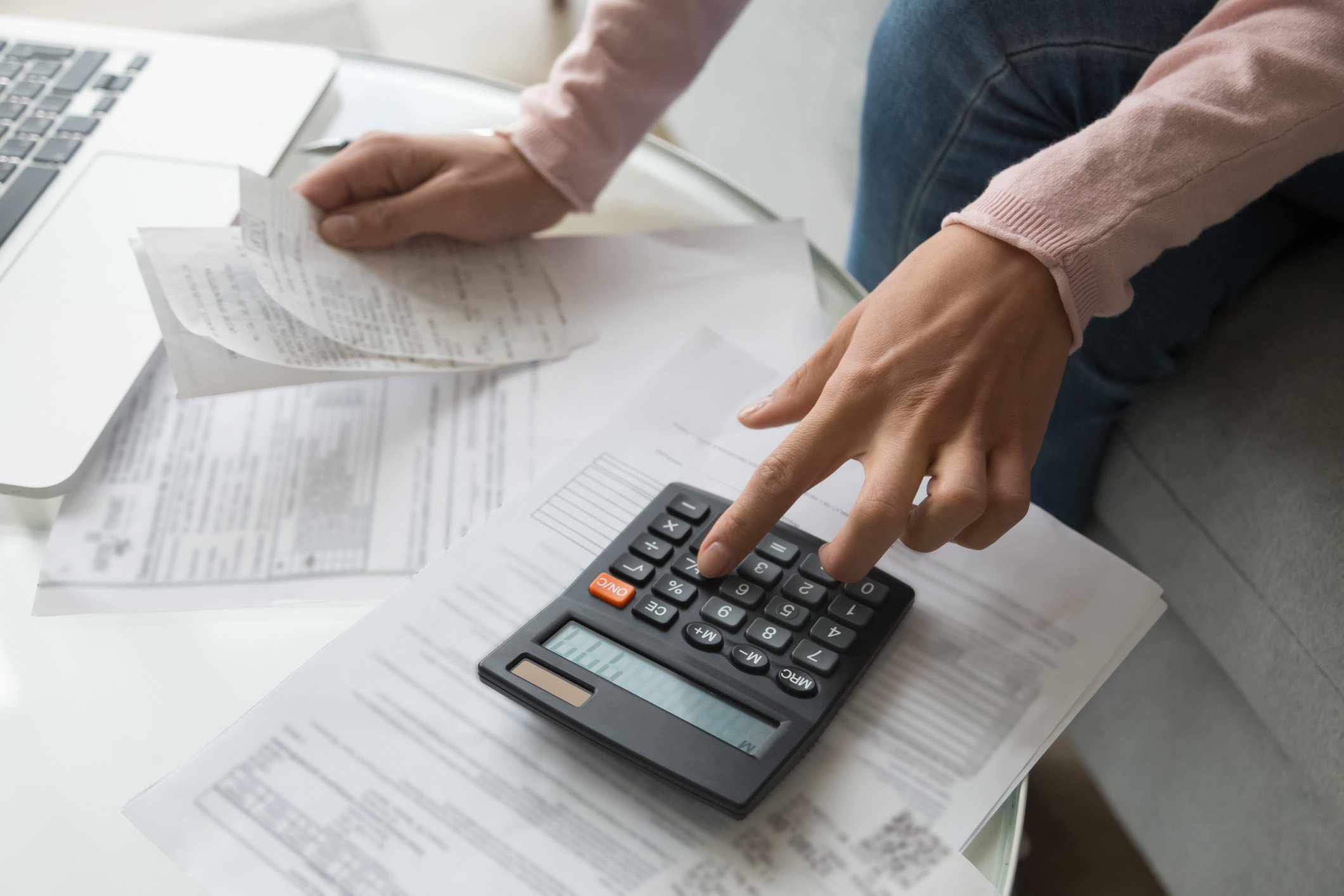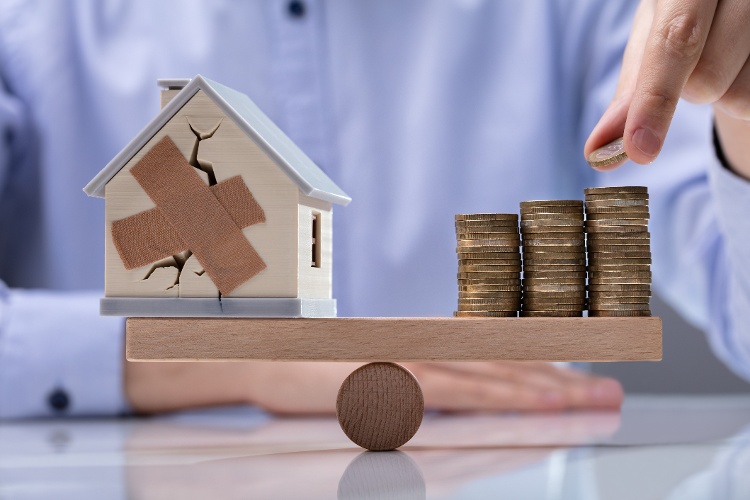During an economic downturn, it’s common to find distressed property on the market for sale. That’s the good news.
The not so good news is that oftentimes, there’s also a lot of deferred maintenance or renovation that needs to be done in order to realize the true fair market value of property being sold under distress.
In this article, we’ll discuss how to use after repair value to benefit from the opportunities that distressed property can offer, while avoiding some of the most common mistakes.
What is After Repair Value?
After repair value (ARV) is a calculation used by real estate investors to estimate the future value of a property being sold “as-is” after all repairs and renovations have been made.
Although ARV is most frequently used by fix-and-flip investors, buy-and-hold investors focused on recurring income and long-term returns can also benefit from calculating after repair value.
ARV Formula
The formula for calculating ARV, or after repair value, is relatively straightforward:
- ARV = Current property value + Value added from renovations
In most cases, the current property value is the same as the purchase price or the price paid before the renovations begin. Value-added is a combination of the cost of the renovations plus the perceived value of the renovations.
For example, most people don’t have the time, money, or expertise to do a renovation project themselves. However, they’re willing to pay a higher purchase price or an increased rental rate in exchange for the convenience of living in a property where the upgrading has already been done.

Why After Repair Value Matters in Real Estate Investing
Real estate investors calculate after repair value for three key reasons:
- Determine the final sales price
- Create a budget to renovate
- Identify potential profit margin
There are a couple of different ways to look at ARV, depending on the investment strategy being used:
Short-term investment strategy
Investors who are fixing-and-flipping use ARV to choose among alternative investments to see which property offers the highest potential profit.
For example, let’s say fully updated 3-bedroom, 2-bath homes are selling for $150,000 and the fix-and-flip investor requires a minimum $20,000 profit margin. That means your acquisition price plus the cost of repairs can not exceed $130,000.
Knowing what the “zero line” is serves as a built-in safeguard from getting emotionally involved in a transaction. If the numbers don’t make sense, you simply move on to another rehab property in a different neighborhood, city, or state.
Long-term investment strategy
Buy-and-hold real estate investors can also make good use of after repair value calculations, although the way long-term investors use ARV is a bit different from the fix-and-flipper. Rather than a one-time payday, the buy-and-hold investor wants to know how ARV affects the increase of incremental cash flow and overall property market value.
Imagine you own a single-family rental house with a market value of $120,000 generating an annual net operating income (NOI) of $9,100 in a market where cap rates are 7%. Using the cap rate formula, you know that to increase the property value to $150,000 the NOI would need to increase to $2,100:
- Cap rate = NOI / Market value
- Current market value $120,000 x 7% cap rate = $8,400 NOI
- Target market value $150,000 x 7% cap rate = $10,500 NOI
In this example, the ARV is the same thing as the target market value for the buy-and-hold investor. By selecting upgrades that allow you to increase NOI by $175 per month, the property’s future value would increase by $30,000.
Note that you don’t have to spend $30,000 in upgrades to increase the property value by the same amount. Instead, you only need to select the most cost-effective upgrades that boost the net operating income by $175 per month or $2,100 per year.
The NOI might be increased by doing upgrades that tenants see value in and are willing to pay a higher rent for. Depending on the market, this could include projects such as installing energy-efficient appliances or smart home technology systems that can be controlled through a smartphone app.

Calculate After Repair Value in Three Easy Steps
The process for calculating ARV is similar to preparing a comparative market analysis (CMA) or a broker price opinion (BPO). There are three general steps to follow to calculate after repair value:
Step #1: Compile data for the subject property being purchased
Data on the property being purchased normally falls into four main categories:
- Location: Area of the city, specific neighborhood, proximity to good amenities such as shopping and transportation, proximity to negative factors such as power lines and loud noises.
- School Districts: Even if your target renter doesn’t have children, the quality of the school district the property is in has a significant effect on value, according to Realtor.com.
- Property Specifications: Type of property such as single-family or condo, building style such as ranch or bungalow, size in square feet, number of bedrooms and bathrooms, year built, condition, and deferred maintenance, existing finishes such as vinyl flooring vs. hardwood.
- Lot: Size in square feet, corner or interior lot, fencing type, formation of lot and slope, existing landscaping, proximity to busy road or community entrance.
Step #2: Compile data for comparable properties
Once you’ve gathered as much detail as possible on your subject property, the next step is to compile data for comparable properties that have already been renovated.
This helps you to create the right expectations for property value before and after renovations, and also to identify which upgrades and amenities people are placing the most subjective value in.
Good sources for finding comparable properties include:
- MLS report from your local real estate agent.
- Zillow by entering the subject property address then searching for similar sales and active listings.
- Roofstock marketplace to learn what single-family rental properties are selling for, financial performance measurements such as market rents and gross yields, and the rating of the neighborhood and school district.
Step #3: Compare comps to the subject property to estimate ARV
With data on your subject property and comparables in hand, the third step is to compare and contrast. Start by setting a value range from low to high, then see where your subject property lies on the scale before and after renovations are completed.
If the subject property is already near the high end of the price range in ‘as-is’ condition, be cautious of investing too much money in renovations or the property will end up being overpriced and generating a lower overall return on investment.
However, sometimes cost-effective renovations such as refinished kitchen cabinets or updated landscaping to improve curb appeal can generate a significant increase in rental income. This additional cash flow can increase property value over time, and also make it easier to pay down the mortgage faster while generating additional capital for future investments.

The 70% Rule
ARV is a helpful calculation for determining final market value, regardless of the amount of renovating that needs to be done. Real estate investors who focus on buying fixer-upper property also use the “70% Rule,” which is also known as the Golden Rule of Fixing-and-Flipping.
The 70% rule is combined with the ARV to determine what price should be paid for a property:
- Maximum Purchase Price of Subject Property = ARV x 70% less Estimated Repair Cost
For example, if the ARV of your subject property is $150,000 and your estimated cost of repairs is $30,000, according to the 70% rule your maximum purchase price is:
- $150,000 ARV x 70% = $105,000 less $30,000 estimated repair cost = $75,000 maximum purchase price of subject property
You may be asking yourself, why 70%?
The 30% margin allows for the return on investment, and also provides some room for error if repairs costs are underestimated or ARV is overestimated. Sometimes, investors who focus on specific types of property in the same market go as high as 75% or 80%, especially if the property is already pre-leased or a buyer is lined up to purchase the renovated property.

Common Mistakes When Calculating ARV
ARV is a quick and easy way real estate investors can calculate the value of a property at a certain point in time. With enough practice, investors can create accurate after repair value estimates faster and at much less cost than paying an appraiser before making an offer.
Some of the other big advantages to calculating after repair value include setting maximum acquisition prices and renovation budgets, determining likely selling price or final market value, and deciding whether or not the property is worth the time and effort.
Although ARV is a useful tool, there are some potential disadvantages and mistakes to avoid when calculating after repair value:
- There’s a big learning curve when calculating ARV, so at first the process can seem tedious and time-consuming until you’ve mastered the art of determining after repair values.
- Poor choice of comparables can lead to overestimating final market value, with ‘as-is’ property being purchased for too high of a price.
- Underestimating renovation costs is another mistake many investors make, so once the property goes under contract have your team of contractors and handymen inspect the property inside and out to make sure the purchase will still be profitable.
- Market conditions, supply, and labor costs can fluctuate both up and down, sometimes in a surprisingly short period of time. In addition to conducting a property-specific analysis, the best ARV estimates also take into consideration the overall trends of the local real estate market and economy.
Final Thoughts
Relying on an appraiser to determine property value can result in too many lost opportunities, especially in real estate markets that are quickly changing. With enough practice, real estate investors can quickly and accurately calculate ARV and repair estimates that compensate for market variables and conditions.
After repair value allows fix-and-flip investors to determine if there’s enough profit from doing the flip, while buy-and-hold real estate investors can use ARV to perform cost-effective renovations that increase incremental revenue and long-term property market value.









